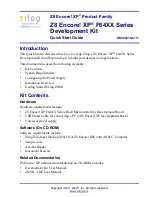
3
PCB Layout Design
Figure 16: ESP32C3 Family Stub in a Fourlayer PCB Design
• It is required to add GND isolation between the power trace of pin 2 and pin 3 (analog power supply pins)
and GPIO traces on the left, and place ground vias as much as possible.
• The ground pad at the bottom of the chip should be connected to the ground plane through at least nine
ground vias.
Note:
If you need to add a thermal pad EPAD under the chip on the bottom of the module, it is recommended to employ a
nine-grid on the EPAD, cover gaps with ink, and place ground vias in the gaps, as shown in Figure
. This can avoid tin
leakage when you solder the EPAD to the base board.
3.4 Crystal
Figure
shows the reference design of the crystal. In addition, the following should be noted:
• The crystal should be placed far from the clock pin to avoid its impact on the chip. It is good practice to
surround the crystal traces with ground copper on all sides and dense ground vias for better isolation.
• There should be no via for the clock input and output traces, which means the traces cannot cross layers.
• The external regulating capacitor should be placed near the left or right side of the crystal, and at the end of
the clock trace whenever possible, to make sure the ground pad of the capacitor is close to that of the
crystal.
• Do not route high-frequency digital signal traces under the crystal. Ideally do not to route any signal trace
under the crystal. Vias on the power traces on both sides of the crystal clock trace should be placed as far
away from the clock trace as possible, and the clock trace should be surrounded by grounding copper on
both sides.
• As the crystal is a sensitive component, do not place any magnetic components nearby that may cause
interference (e.g. large inductance component), and ensure that around the crystal is a clean large ground
plane.
Espressif Systems
20
ESP32-C3 Family Hardware Design Guidelines V1.0










































